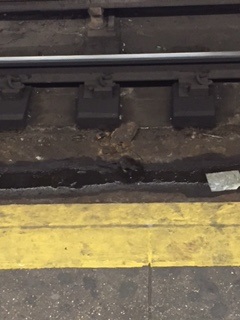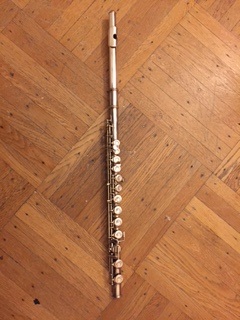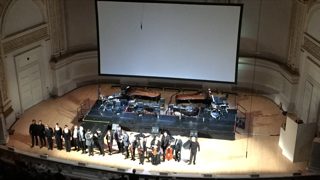We also talked about whisper tones again, focusing on the harmonic series available from the low notes. It turns out that there is a such thing as the thirteenth partial cutoff when it comes to whisper tones done through harmonics. So there is a limit to how high you can get with the whistle tones. To practice the available harmonic range, which is still significant, imagine playing very soft harmonics to achieve the correct embouchure.
The mechanization of different flutes and fingering systems was another thing we touched on. For example, an extension for the flute has been made that allows the instrument to reach low B-flat (though you do have to sacrifice the B-natural). This came about to better play jazz, which is often in “flat” keys. Related to this low end of the flute, there is a mechanism that can be attached to the flute called the left hand C-sharp trill key addition. It is played by the left hand pinky to hold down the low C-sharp key, allowing one to use the right hand pinky to trill quickly and cleanly between C-sharp and B. We also talked about and played the Kotato contrabass flute; the lip plate and embouchure hole was inspired by the pipe organ.
One of the things I’ve been struggling with is sustaining multiphonics. Robert had a few suggestions to help with this. A few of his ideas will work well for my general flute playing, even without multiphonics: open my mouth more, use a strong air support, and have a narrower embouchure. My flute embouchure is slightly off center, so we discussed the possibility of shifting the flute over to better accommodate that. To work on the narrower embouchure, one tactic is to hold match sticks in your mouth to almost bookend the sides of the embouchure hole. All of these things helped me sustain multiphonics as well.
Other things:
- Robert made the statement “If I fall, I’m going to fall on my face.” This implies a forward motion, an urging to continue discovering and moving forward, not leaning back. It really stuck with me.
- We talked about the need for supportive musical communities, rather than those fostered by competition alone. I'm looking at you, Texas schools.
- The comedian Fred Newman wrote a book, Mouth Sounds, that explains how to create certain noises (such as a dripping water faucet). Some of them can be applied to flute playing (like the water sound one can to circular breathing), and it also gives the vocabulary to talk about different areas in the mouth and the combinations there.
- I FINALLY GOT A HAIRCUT. And for only $20. #blessed
Until next time!


